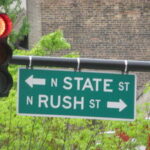It used to be that gangs were big-city problems that residents of smaller communities were thankful they did not have to worry about. But with law enforcement tightening their grip on gang activities in cities such as Chicago, Milwaukee and Minneapolis, gangsters are increasingly moving their illegal activities, particularly drug sales, outside the metro areas. And with that comes other related violence.
Much to their liking, gangs are also finding that the more rural areas have fewer law enforcement personnel per square mile, and many times schools, community groups and law enforcers are not as highly trained in the knowledge of gangs and their activities. Also, drug dealing competition is much less in smaller communities, if it exists at all.
Faribault, Minn., is a good example. Faribault is a community of fewer than 21,000 residents, located less than 30 minutes south of the Twin Cities and along a major Interstate.
Recently, Faribault resident Jim Lassek noticed several young men continually hanging out in a front yard in his neighborhood. According to Sunday’s Minneapolis Star Tribune, he was hesitant to assume the worst, but wondered if the group was a gang and if he should call police. “Everybody has the right to congregate in their front yard,” he said, but a couple of gang-related incidents in the town within the preceding month had him on the alert.
The Tribune reports that Lassek did contact police and learned the young men were part of the Minneapolis Tre Tre Crips. Even more disconcerting, police confirmed that this notorious and violent gang was implicated in the June 9 shooting death of 14-year-old Charez Jones as she left a birthday party in Minneapolis.
According to Faribault law enforcement, members of the Tre Tre Crips brought their operation to Faribault, where they were even bold enough to rent a house across the street from the county government offices. Richard Cook is the Rice County sheriff in Faribault. He told the Star Tribune that “they were bold and in your face. It was spitting distance from us.”
On June 6, members of the Tre Tre Crips began chasing and hollering at one another in the Rice County Courthouse. During the fracas, two of them leaped over a counter in the clerk’s office and picked up a chair, threatening to throw it, reports the Star Tribune. The men were arrested, but not before frightening courthouse staff not used to such incidents.
It is believed that a shooting at a Faribault intersection about a month prior may have been connected to the courthouse incident. The Star Tribune reports there had also been an undercover drug transaction at suspects’ house.
Jeff Paulsen is the chief of the criminal division of the local U.S. attorney’s office. According to the Star Tribune, his office has “noticed a trend toward metro-based gangs setting up satellite drug distribution centers in outstate communities.”
Ron Ryan, commander of the Metro Gang Strike Force, said gangs play a big role in drug trafficking and are able to charge considerably more for drugs outside the metro area because of a lack of competition. According to the Star Tribune, Ryan said the Strike Force keeps track of about 14,000 gang members and affiliates, and about a third of them live outside of the metro, or what is termed outstate Minnesota.
Sources:
Minneapolis Star Tribune, Gangs are increasingly attracted to small towns; http://www.startribune.com/467/story/1251612.html
Minneapolis Star Tribune, Indictment targets gang in Faribault; http://www.startribune.com/467/story/1235448.html





